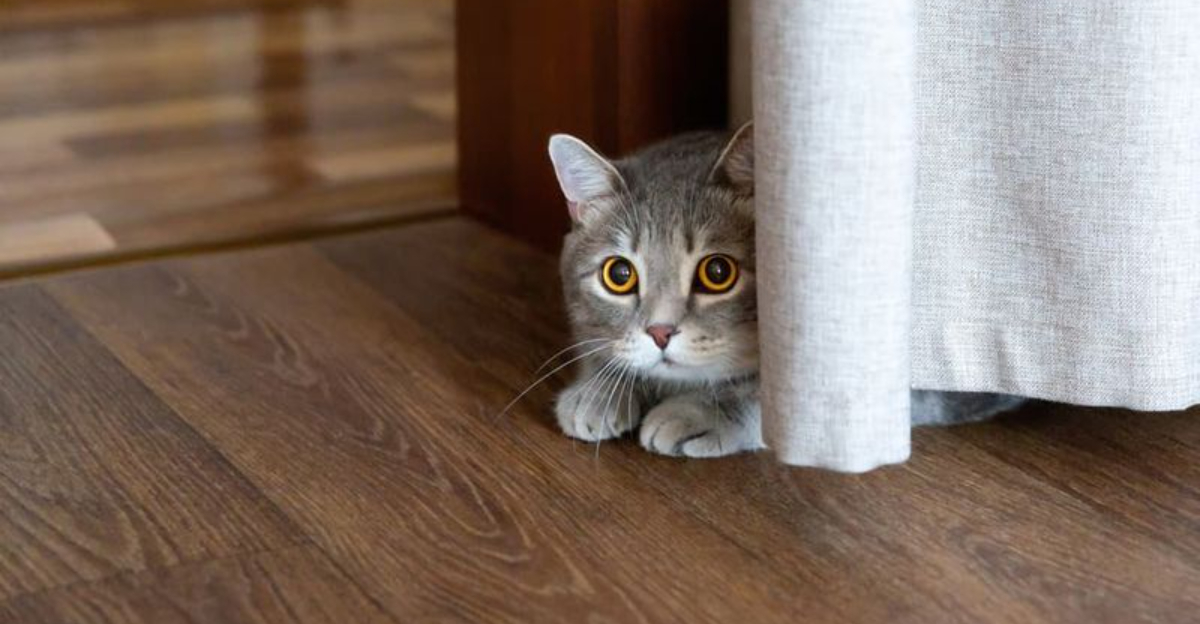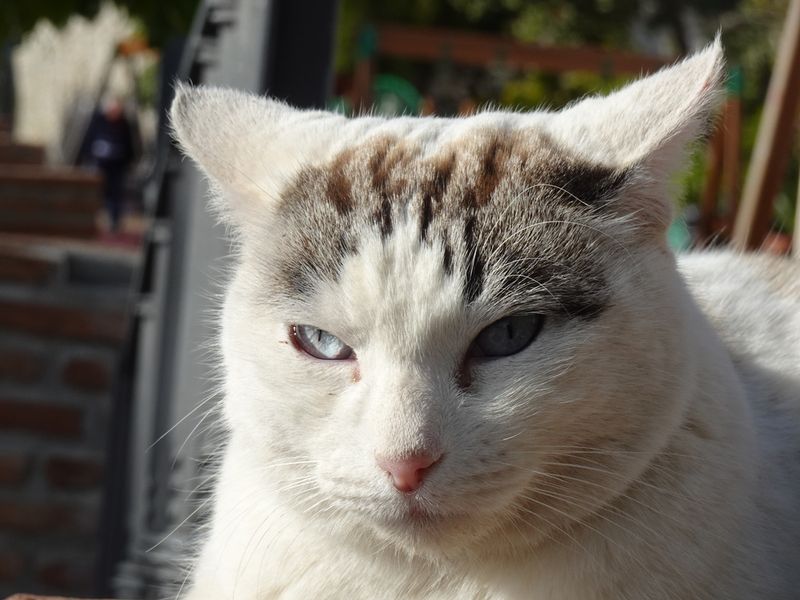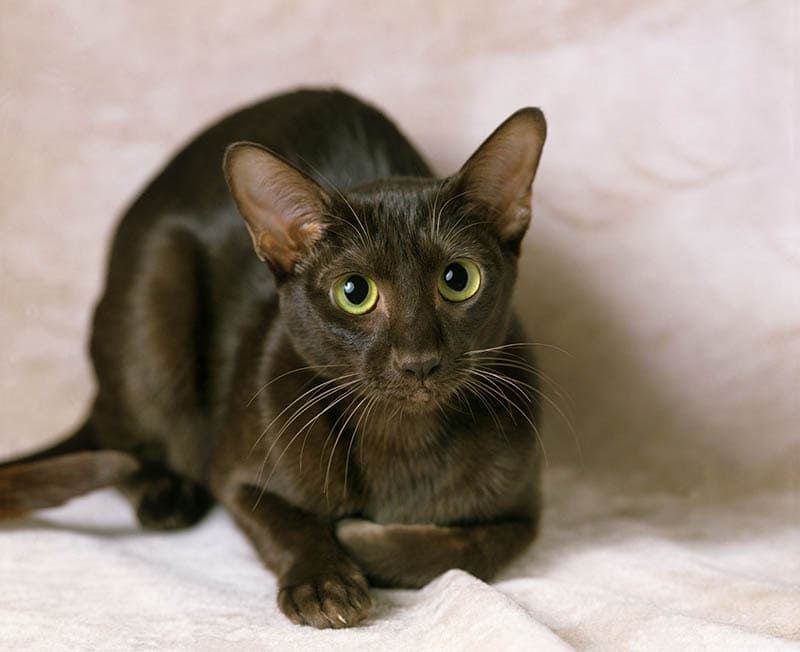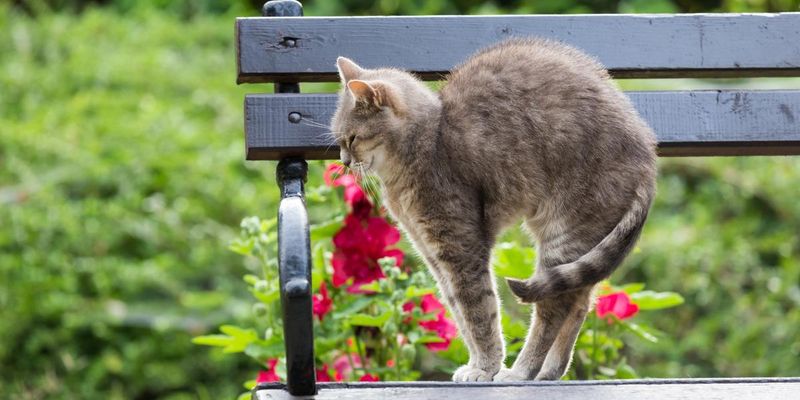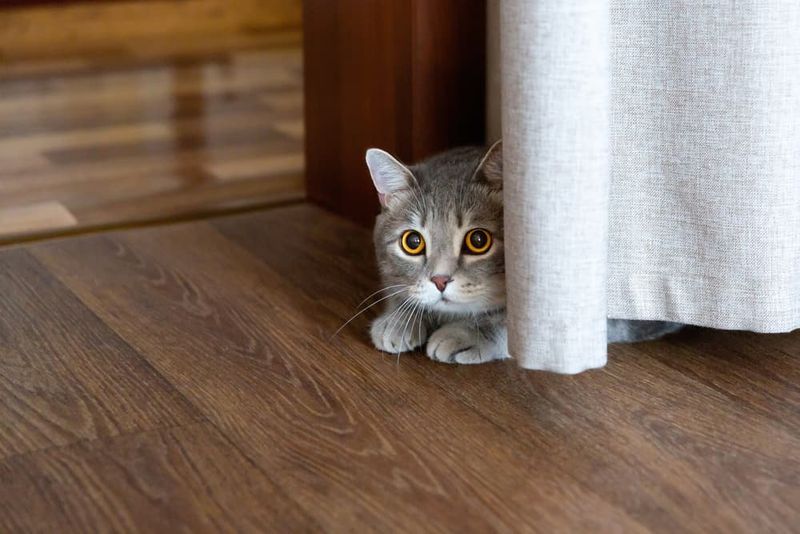📖 Table of Content:
- 1. Flattened Ears
- 2. Dilated Pupils
- 3. Arched Back with Fur Standing Up (Piloerection)
- 4. Tucked Tail or Tail Wrapped Around the Body
- 5. Cowering or Hiding
- 6. Growling, Hissing, or Spitting
- 7. Freezing or Remaining Completely Still
- 8. Refusing Food or Treats
- 9. Swatting or Attempting to Scratch or Bite
Cats may not speak our language, but they communicate volumes through body language, facial expressions, and behavior. As instinctual and independent creatures, they rely heavily on nonverbal signals to express how they’re feeling—especially when they’re frightened. Unfortunately, many signs of feline fear are subtle and often misunderstood by even the most well-meaning pet parents.
Learning to recognize these signs is more than just a way to avoid scratches or hissing; it’s essential for building a trusting relationship with your cat. When a cat feels safe, it can thrive emotionally and physically. But fear and chronic stress can lead to behavioral problems, health issues, and a breakdown in the pet-owner bond.
This guide breaks down nine common signs of fear in cats and explains what each one means. Each sign offers insight into your cat’s emotional world, helping you respond with the compassion and care they need. Let’s dive into the silent signals that might be your cat’s way of saying, “I’m scared.”
1. Flattened Ears
One of the most recognizable signs of fear in cats is flattened ears. When a cat presses its ears tightly against its head, it’s not just a random twitch—it’s a defensive gesture. This position protects the delicate ear tissue from potential threats or confrontations. Flattening also reduces the cat’s profile, helping it seem less conspicuous in stressful situations. Cats may adopt this posture when they hear loud noises, encounter unfamiliar people or pets, or feel trapped. It’s a visual cue that says, “I feel threatened and I’m preparing to defend myself if necessary.” As a pet parent, you should view flattened ears as an early warning sign to back off and give your cat space.
2. Dilated Pupils
Enlarged, dilated pupils are more than a response to dim lighting—they can be an unmistakable indicator of fear. A frightened cat’s nervous system floods with adrenaline, causing the pupils to expand dramatically. This adaptation allows the cat to take in more visual information in a potentially dangerous situation. The wider eyes might also appear glassy or unfocused, especially if the cat is frozen in place. Alongside dilated pupils, you may notice your cat breathing faster or darting glances around the room. In combination with other body language cues, this can tell you the cat is feeling cornered or overwhelmed. Don’t try to force interaction at this point; instead, allow the environment to calm naturally.
3. Arched Back with Fur Standing Up (Piloerection)
A cat that suddenly arches its back and raises its fur isn’t trying to look cute—it’s displaying classic fear-based behavior. This reaction is often accompanied by a sideways stance, puffed tail, and hissing or spitting. Piloerection, or raised fur, is a biological response designed to make the cat appear larger and more intimidating. This defense mechanism is especially common in kittens or cats faced with sudden stimuli like barking dogs or unexpected movement. While it might look aggressive, this pose actually reflects intense fear rather than a true desire to attack. The goal is deterrence, not confrontation. Whenever you observe this body language, avoid making eye contact and slowly remove the stressor if possible.
4. Tucked Tail or Tail Wrapped Around the Body
Rather than being just a cozy pose, a tail tightly tucked between the legs or wrapped closely around the body signals apprehension. This compact body shape is a self-protective instinct, reducing exposed areas that could be vulnerable. Often, this is paired with crouching low to the ground, ears back, and avoidance of eye contact. Cats in this state are trying to disappear or make themselves less of a target. You might see this behavior during vet visits, thunderstorms, or when new people enter the home. Attempting to touch or comfort your cat during this time might escalate the fear. Instead, give your cat a quiet place to retreat and emerge when it feels safe again.
5. Cowering or Hiding
Disappearing under the bed or behind furniture is a classic fearful response in cats. Unlike dogs, who might bark or run, many cats will simply vanish when they feel unsafe. This behavior is rooted in their survival instincts—hiding helps avoid confrontations in the wild. It’s especially common in shy cats, recent rescues, or during stressful events like moving homes. While it’s tempting to coax them out, this often increases their anxiety. Instead, let them come out on their own terms, ensuring that hiding spots remain accessible and safe. Over time, consistent routines and positive experiences will reduce the need for them to retreat.
6. Growling, Hissing, or Spitting
These vocalizations are your cat’s verbal warning system, used when they feel fear has escalated to the brink of confrontation. A growl or hiss tells other animals or humans to back off immediately. These sounds are typically accompanied by defensive body language, like arched backs or flattened ears. Spitting—forcefully expelling air with a sharp noise—is a more intense, fear-based behavior usually reserved for extreme distress. While alarming to hear, these noises are not acts of aggression but rather self-protection. Think of them as the final warning before a possible swat or bite. The best response is to calmly step away and give the cat space to decompress.
7. Freezing or Remaining Completely Still
Not all cats react to fear with dramatic displays—some simply freeze in place. This is part of the “freeze, fight, or flight” response and is often overlooked because it’s silent. The cat might crouch with wide eyes, motionless and unblinking, as it assesses the danger. This stillness is a calculated survival tactic in the wild, where movement could attract predators. It can occur during vet exams, when cornered, or after loud noises. Touching a cat in this state might cause it to lash out unpredictably. Recognizing this subtle sign helps avoid pushing your cat past its comfort threshold.
8. Refusing Food or Treats
Sudden disinterest in food—especially favorite treats—can be a telling sign of stress or fear. When cats are scared, their digestive systems slow down as the body prioritizes survival over appetite. This makes food rejection a strong emotional cue. You may notice this at the vet, after introducing a new pet, or during loud events like fireworks. It’s important not to force-feed or push treats on a frightened cat. Instead, allow time for them to feel secure and reintroduce food slowly. Persistent food refusal should be monitored by a vet to rule out illness alongside emotional distress.
9. Swatting or Attempting to Scratch or Bite
Fear can sometimes push a cat into what appears to be aggression—but it’s usually a last resort. When all other signals are ignored, a scared cat may swat, scratch, or even bite to defend itself. This often happens when the cat feels cornered or physically restrained. Raised fur, hissing, and rapid tail flicking usually precede this behavior. It’s not meant to harm but to create distance from the perceived threat. Respect these boundaries by backing away and giving the cat time to settle. Recognizing the build-up to this response helps prevent it altogether.
